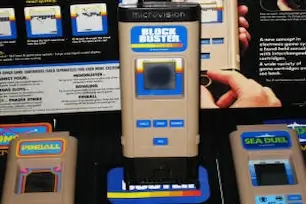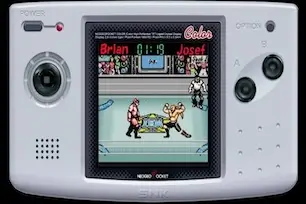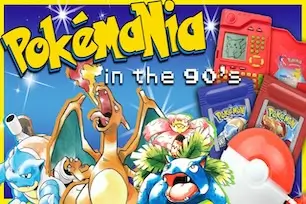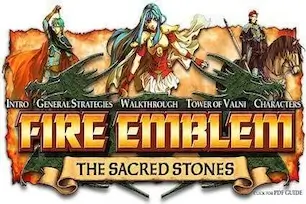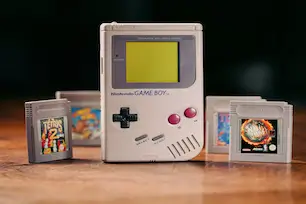Even though big companies like Nintendo, Sony, and Microsoft are releasing new consoles such as the Xbox Series X, Nintendo Switch 2, and PlayStation 5, retro gaming is gaining popularity.
Retro gaming is making a major comeback in today’s video game culture. Players of all ages are diving into retro video games and reliving their childhood memories.
As old school games become more popular, people are drawn to them not just for nostalgia, but also for the special experience they offer. Playing retro video games gives a unique feeling that you can't find in newer games.
TL;DR – Key Takeaways
Gaming History Insight – How retro games shaped player skills and persistence compared to modern titles.
- Retro games offered higher difficulty with no tutorials, limited saves, and steep learning curves.
- Modern games focus on accessibility, adding guides, checkpoints, and map markers.
- Old-school gameplay built persistence, problem-solving skills, and a stronger sense of achievement.
- Some modern hits, like Dark Souls and Breath of the Wild, revive retro-style challenge.
In this article, we'll explore ten compelling facts that explain why retro gaming is better than modern gaming. Let’s uncover what makes this trend so captivating.
The Table of Contents
Reason 1: How Online Commerce Made Retro Gaming More Accessible
With the rise of retro video games, it is now easier than ever to shop online for old consoles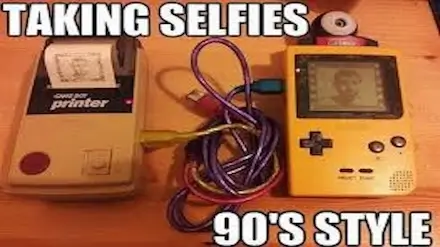 and games. Both major companies like Amazon and eBay, along with smaller retro gaming stores, make it simple to buy and sell retro video games and equipment. They help gamers connect with each other to find exactly what they need.
and games. Both major companies like Amazon and eBay, along with smaller retro gaming stores, make it simple to buy and sell retro video games and equipment. They help gamers connect with each other to find exactly what they need.
- So finding ways to play the original games on their original systems is no longer the struggle it once was (especially in the nineties).
- In addition to accessibility, the nature of gameplay has evolved, with many gamers valuing the multiplayer experience.
- Despite all the Hardware Advancements, there are certain things that modern day consoles can't do that old video game consoles can offer in spades.
- When you mention "multiplayer" in retro gaming, it refers to what we now call "local multiplayer." To play a game like "Super Smash Brothers" on the Nintendo 64 with your friends, everyone needed to be in the same room together.
Reason 2: The Return of Local Multiplayer in Old School Games
Playing online with millions of people means you can always find someone to compete with in games like "Call of Duty" or "Battlefield." However, multiplayer still has its own set of benefits.
- Back in the day, it was much more of a communal experience. If you were playing against friends in the same room, it was much more intimate (and oftentimes a lot more fun) because you were all in the same area.

- This focus on social interaction shows how old school games offered special experiences. Sometimes, modern consoles miss this because of their hardware limits.
- You could trash talk your friends, take turns when you had more than two or four people who wanted to play, use split-screen gaming and more.
- This focus on social interaction highlights how old school games offered special experiences, contributing to the unique retro gaming experience that modern consoles sometimes miss due to their hardware limits.
Reason 3: Why Retro Hardware Limitations Improved Gameplay
While modern consoles have powerful hardware, many players enjoy the simple charm of retro video games. They find it to be a nice change. In the fact that old school games themselves had to rely heavily on gameplay above all else due to the limitations of hardware at the time.
- Many great games are available for consoles like the Xbox Series X and PlayStation 5.
- However, it is becoming more common to find games that focus mainly on visuals. These games may look great and show what today’s hardware can do. However, when you look past the graphics, some titles don't have much else to offer.
- Playing old school games, on the other hand, couldn't rely on graphics because the hardware was much weaker.
Reason 4: Why Old School Games Are Winning Fans Across Generations
Instead, video game developers needed to create unique and enjoyable experiences to distinguish themselves from their competitors. One reason retro video games, such as the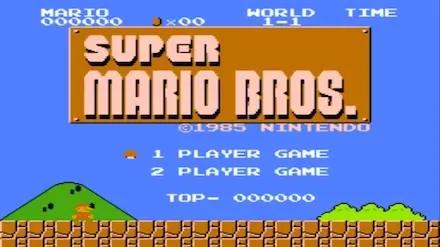 original "Super Mario Bros.," It is considered one of the best games ever made because it remains popular on many systems.
original "Super Mario Bros.," It is considered one of the best games ever made because it remains popular on many systems.
Yet another reason why playing retro gaming consoles is becoming increasingly popular among video game players of all ages has to do with limitations of current hardware.
- The video game industry is now focusing more on online features for their systems. For consoles like the PlayStation 5 and the Xbox Series X, some functions need an Internet connection to work.
- In the past, when playing retro video games, online features were not important because that technology didn't exist. Now that gaming is more online, we can see the limits of this technology.
- If you want to play a retro video game like "Contra," you don't have to think about your Internet speed or if your connection is working. You could put the game into the console, turn it on and play to your heart's content.
- This desire for simpler games has brought back older titles. Many of these games are now being updated for modern platforms.
Reason 5: Retro Video Games Focused on Gameplay Over Graphics
Retro video games are celebrated for their unique gameplay. They focus more on fun than on fancy graphics. For current OSes through platforms like GOG.com, Xbox and PlayStation and Nintendo download stores, and Steam.
- I can play King’s Quest, Quest for Glory, X-Wing, Star Trek: 25th Anniversary, and Super Mario World, among many others, on my current computer and game consoles (and it is glorious).
- Some games like Grim Fandango and Resident Evil get HD updates, others retain their original pixilated glory, and some, like The Secret of Monkey Island and Halo: Combat Evolved Anniversary, let you switch between old and new graphics.
Reason 6: The Lasting Impact of Classic Video Games
What we see is like what happens in other media. The best games last over time, while the average and poor ones fade away. Most of the games that were fun because they were state-of-the-art but that fade when their gameplay and graphics lose their luster have been laid to rest.
- The classics whose core mechanics, art style, and storytelling remain compelling have found second lives, one way or another.
- This revival is not just about nostalgia. It shows how retro video games are being updated for new audiences.
Reason 7: Modern Updates and Remasters of Retro Games
Many developers see that there is a demand for new versions of old school games. These updates appeal to both long-time fans and new players. Sanctum 2, for instance, hides adapted versions of the old school games such as the Atari Centipede and Breakout games (you have to find arcade consoles hidden within the world, and then you can play them).
versions of the old school games such as the Atari Centipede and Breakout games (you have to find arcade consoles hidden within the world, and then you can play them).
- The NES Remix games are an interesting development in retro remixing. NES Remix is built on the idea that retro video games can be a lot of fun.
- It includes classic games like the original arcade Donkey Kong and the earlier Mario Bros. games. It also features some lesser-known titles, such as Balloon Fight, Urban Champion, and Clu Clu Land.
- However, playing these games with their old frustrations and tough challenges may not be the best way to enjoy them now. Instead, they create a list of many short clips from retro video games.
- These clips are part of a big menu of challenges that unlock new levels and games as you advance. Rarely will you spend more than two minutes with anyone game snippet.
The experience is one of dipping into the past for maximum gaming nostalgia with minimal old-school frustration. I don't want this to be how I enjoy all my retro video games, but I see it as a positive sign. It shows that there are new choices appearing in the retro gaming community.
Reason 8: How Retro-Style Sequels Keep Old Franchises Alive
As the gaming industry gets better at reintroducing old school games, we can all reflect on what made those games fun in the past. We can also consider what aspects are worth bringing back now.
- Today’s game developers are learning from the past.
- They are creating new games and reboots
 of old series that focus on the gameplay, stories, and art styles of earlier games. At the same time, they use all the improvements made over the years.
of old series that focus on the gameplay, stories, and art styles of earlier games. At the same time, they use all the improvements made over the years.
Reason 9: Mobile Gaming’s Role in the Retro Video Game Revival
It has provided the perfect platforms for replaying older, simpler titles (and new games based on them). When I sit down at home to play games on my HDTV, I often choose my PS5 over my Nintendo NES or N64. However, I do play my Nintendo 64 now and then. But what about when I'm on the go?
- It's an ideal setting for playing retro video games whose graphics don't need (or benefit from) a giant HDTV, and which can be played in small chunks as I commute or kill time waiting in various situations.
- The popularity of mobile gaming and consoles, starting with the Game Boy, has led to more people playing old school games. The growth of smartphones has also expanded the audience and options for retro and retro-inspired gaming.
Reason 10: The Nostalgia Factor – Why Retro Gaming Continues to Thrive
As we wrap up our exploration of the remarkable growth of retro gaming, we'd love to hear from you! What are your favorite retro video games, and what memories do they evoke? Have you recently discovered any old school games that you can't stop playing?
Please share your experiences and favorite games in the comments below. Let's celebrate the nostalgia and joy of retro gaming for all ages!
About Us - Buy, Sell, Trade Retro Games at The Old School Game vault
Looking to buy, sell, or trade retro games? Look no further than Old School Game Vault, the ultimate marketplace for vintage video game enthusiasts!
Our platform helps you find classic games from your childhood. You can easily buy the games you love or sell the ones you no longer play.
Would you like to make a trade? Our community is filled with gamers eager to swap their favorites, making it simple to refresh your collection.
Frequently Asked Questions
What are retro gaming consoles?
- Retro gaming consoles are systems designed to play classic video games. They include original vintage hardware (like NES, SNES, Sega Genesis, and Nintendo 64) as well as modern reproductions and emulation-based devices, including mini consoles, FPGA systems, and handhelds.
Which retro gaming console is best?
- The best console depends on what you want to play. NES excels at 2D platformers, SNES is beloved for RPGs, Sega Genesis shines for arcade-style action, and Nintendo 64 is great for local multiplayer. Choose based on game library, controller feel, budget, and available accessories.
Where to buy retro gaming consoles?
- You can buy retro consoles from specialist retro game stores, reputable online retailers, local game shops, and collector events. Look for tested/refurbished units, clear condition grades, and fair return policies to ensure you’re getting a reliable system.
Why is retro gaming so popular?
- Retro gaming blends nostalgia with timeless gameplay, simple pick-up-and-play design, and social local multiplayer experiences. Modern rereleases, remasters, and easy access on handhelds and digital stores have also introduced classic games to new audiences.
Are retro gaming consoles worth it?
- They can be worth it if you value authentic hardware, original controllers, and collecting physical games. Consider total cost versus emulation, reliability and maintenance, and the availability and price of the games you want. Starting with a tested or refurbished console is a smart choice.




